RJ Market Watch
A decade of home: Staying ahead in the game

Manufacturers, retailers and designers — the three pillars of the gem and jewellery industry will need to work on tandem and keep engaging with the customer to drive sales home
As The Retail Jeweller World Dubai Forum and Awards marked its niche on the shores of the city of gold, bigger and better than the previous version, there was one thought that was buzzing through the esteemed ranks. This was, after all, the first jewellery forum that had graced Dubai since the pandemic shut down everything unceremoniously.
Lined up were panel discussions and sessions that were quite delightfully relevant to the present scenario. True to the spirit, the first session went off in a spark. Called “A decade of home: How will jewellery consumption trend transform in the future and how jewellery designers, manufacturers and retailers should collaborate to enhance consumer experience?”, the session as expertly moderated by Amit Dhamani, CEO and managing director of Dhamani 1969. The panellists were Tamjid Abdulla, deputy CEO of Jawhara Jewellery, Maha Al Sibai, founder and jewellery designer of Maha Al Sibai Jewellery, Tamara Al Shamari, founder and jewellery designer of Taiia Jewellery, Dr Motaz Al Shueibi, owner of Salem Al Shueibi and Colin Shah, chairman of GJEPC and founder and managing director of Kama Schachter.
Dhamani was on point when he praised the RJW Forum for its swashbuckling efforts in putting up a brilliant show in such a short time. “It was a year of Zoom calls and online meets, so you can only imagine how delighted being here makes me. All the industry leaders are here, and I am always energized to see how The Retail Jeweller forum functions,” he said.
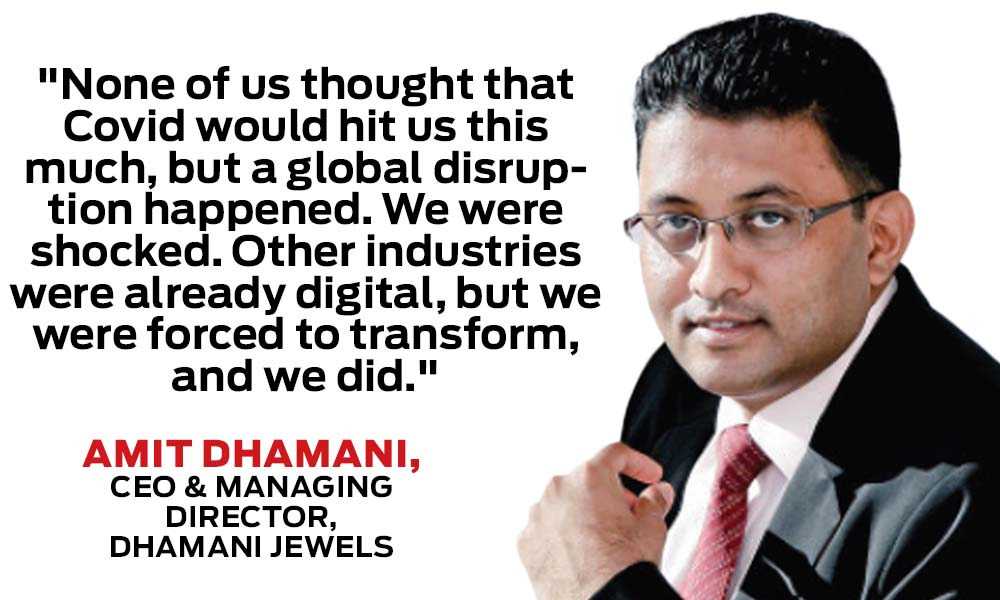
Dhamani took the audience through a rear window when he spoke about 2019, when we last touched and felt jewellery while buying it. “None of us thought that Covid would hit us this much, but a global disruption happened. We were shocked. Other industries were already digital, but we were forced to transform, and we did. A stunning example of this metamorphosis is Tanishq, which sold Rs 100 crore worth of jewellery just through images,” he said.
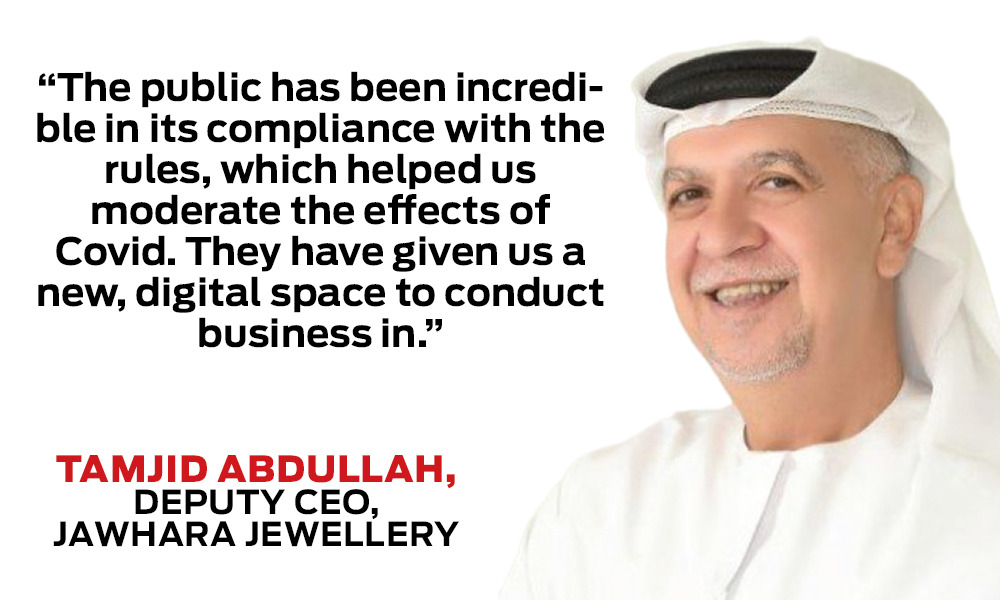
Tamjid Abdullah picked out the positives from the impact of the pandemic. “The adverse effect has been of a distinct kind because it opened us to social media communication with customers. Covid did deal a blow but the initial shock lasts only a few days and after that, people try to buckle up and make the most of the situation. We did the same thing. Along with masks and sanitizers, we adapted to distanced business. The public has been incredible in its compliance with the rules, which helped us moderate the effects of Covid. They have given us a new, digital space to conduct business in,” he said.
Abdullah stressed on the importance of jewellery in a global and cultural context and drew everyone’s attention to the fact that this was a business that would never run out of fuel. “You can’t change the fact that jewellery is jewellery, a symbol of love, sentiment and heritage. It is an heirloom, it is a gift, it is something that will keep charming generations to come,” he said. “We look at jewellery today and it is inspired by nature. It has a story. We have seen new designers with unique ideas. The lockdowns around the world allowed us a lot of time to explore their talent. I met so many youngsters with such interesting ideas.”
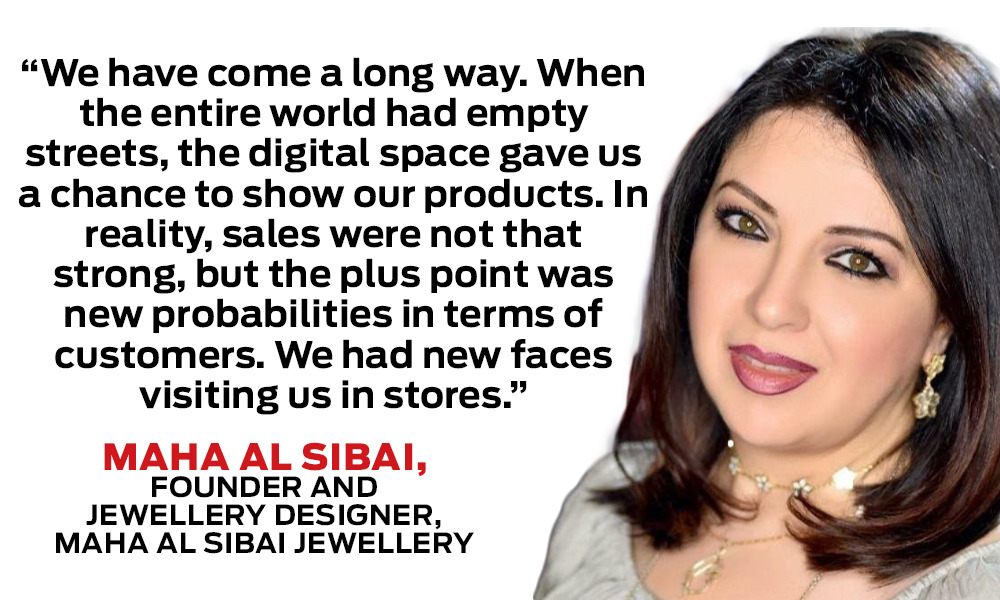
For Maha Al Sibai, the pandemic was a great leveller, and taught the traditional industry how to adapt. “We have come a long way. When the entire world had empty streets, the digital space gave us a chance to show our products. In reality, sales were not that strong, but the plus point was new probabilities in terms of customers. We had new faces visiting us in stores. Jewellery between $500 to $1000 is doing well in the digital space. Since the new generation operates virtually, they tend to focus on this bracket, and accordingly, we will focus on what they need. The relation between the consumer and a piece of art is digital now,” she said.
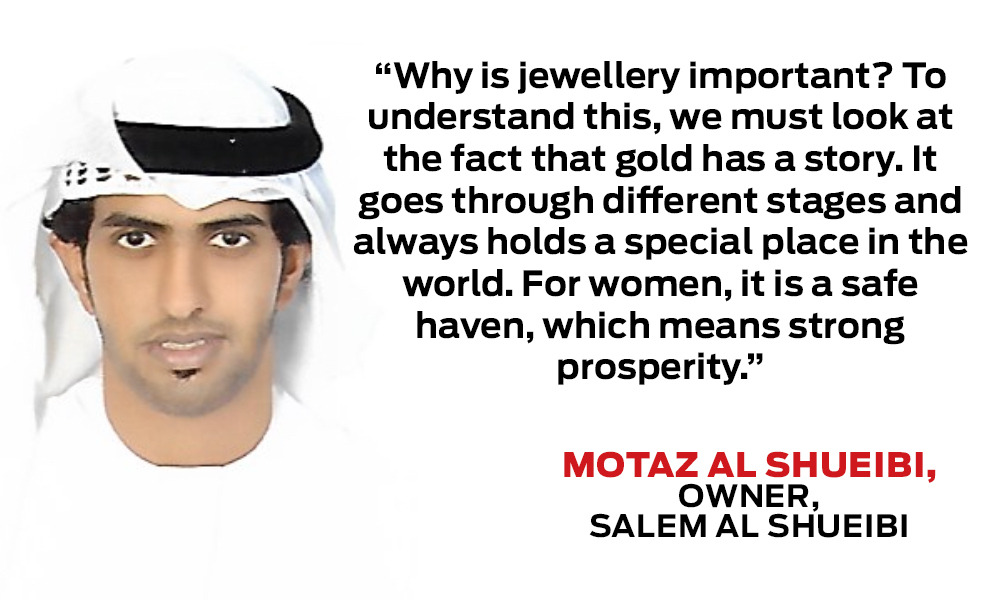
Dr Motaz Al Shueibi drew everyone’s attention to the evergreen value that gold holds in the hearts of every woman. “Why is jewellery important? To understand this, we must look at the fact that gold has a story. It goes through different stages and always holds a special place in the world. For women, it is a safe haven, which means strong prosperity. At the beginning of the pandemic, we were shirking the online experience. Although we adapted to it, people still like to visit shops, now that there is some control over the virus. They invested in gold. As retailers, we need to understand the whole picture before deciding on any design. This is because the consumer leads the fashion, and art adapts to it,” he said.
Colin Shah reminisced the difficult year that 2020 had been for the entire industry. “It has been a year of turmoil and hope. Last year in Mumbai, people were worried that jewellery prices would crash after the lockdown. The opposite happened. Exactly a year later, gold has made a great comeback. Diamonds are going so strong that there is a shortage. Everyone is very optimistic about the next decade,” he said.
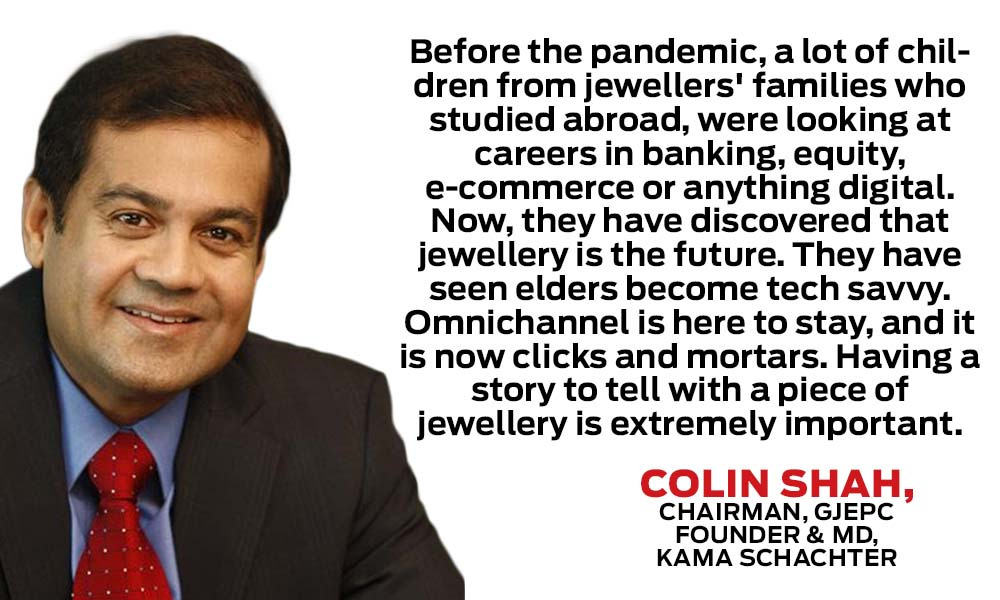
Shah was positive about the next decade because a lot of young brains are making their way back to the industry. “Before the pandemic, a lot of children from jewellers’ families who studied abroad, were looking at careers in banking, equity, e-commerce or anything digital. Now, they have discovered that jewellery is the future. They have seen elders become tech savvy. Omnichannel is here to stay, and it is now clicks and mortars. Having a story to tell with a piece of jewellery is extremely important, and you cannot get the consumer’s attention otherwise when it comes to omnichannel. The consumer is aware today as they have spent much more time online. There is no brand loyalty. How a manufacturer uses technology on design creativity is a very important part of the process,” he said.
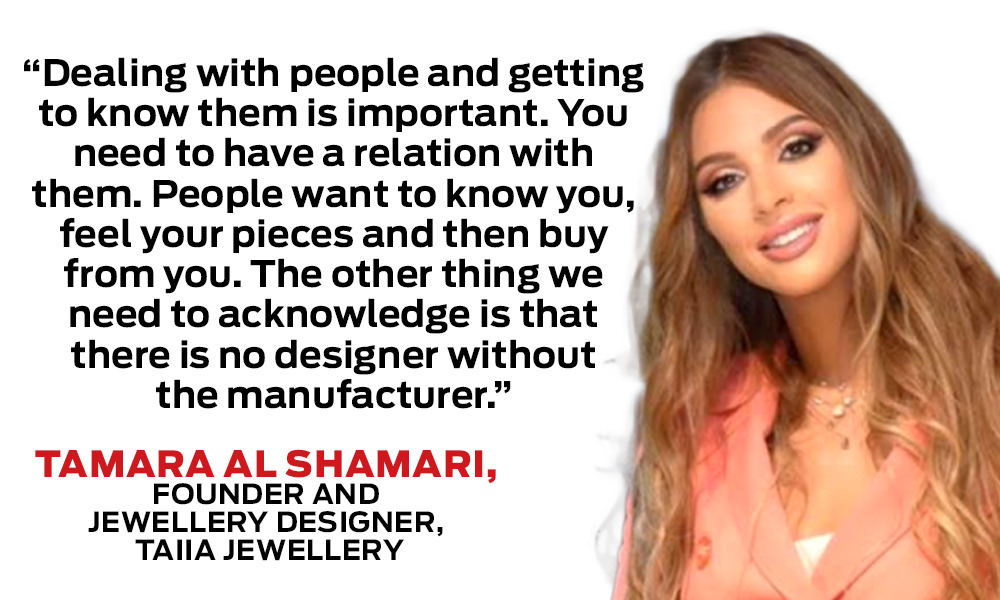
For young Tamara Al Shamari, the lesson learnt is that you can never do away with brick and mortar in the business. “I was a big believer of e-commerce. I wanted to cater to my generation online. In two years, I realised that it was difficult to sell high-end jewellery online. I decided to venture and put myself in a store. What I learnt was a treasure trove. Dealing with people and getting to know them is important. You need to have a relation with them. People want to know you, feel your pieces and then buy from you. The other thing we need to acknowledge is that there is no designer without the manufacturer. We can’t come up with whimsical pieces that are a pain to manufacture. Working in tandem with the artisans is important as they will give you their inputs and ideas for better designs in the future,” she said.
The learnings were many and the frowns, few. The first session of the RJWDF ended in a flourish and had a lot of takeaways for retailers around the table. The importance of omnichannel, a relationship with consumers and a level playing field for both designers and manufacturers is what will paint the next decade golden for the jewellery industry.
Courtesy: Retail Jeweller World News


















You must be logged in to post a comment Login